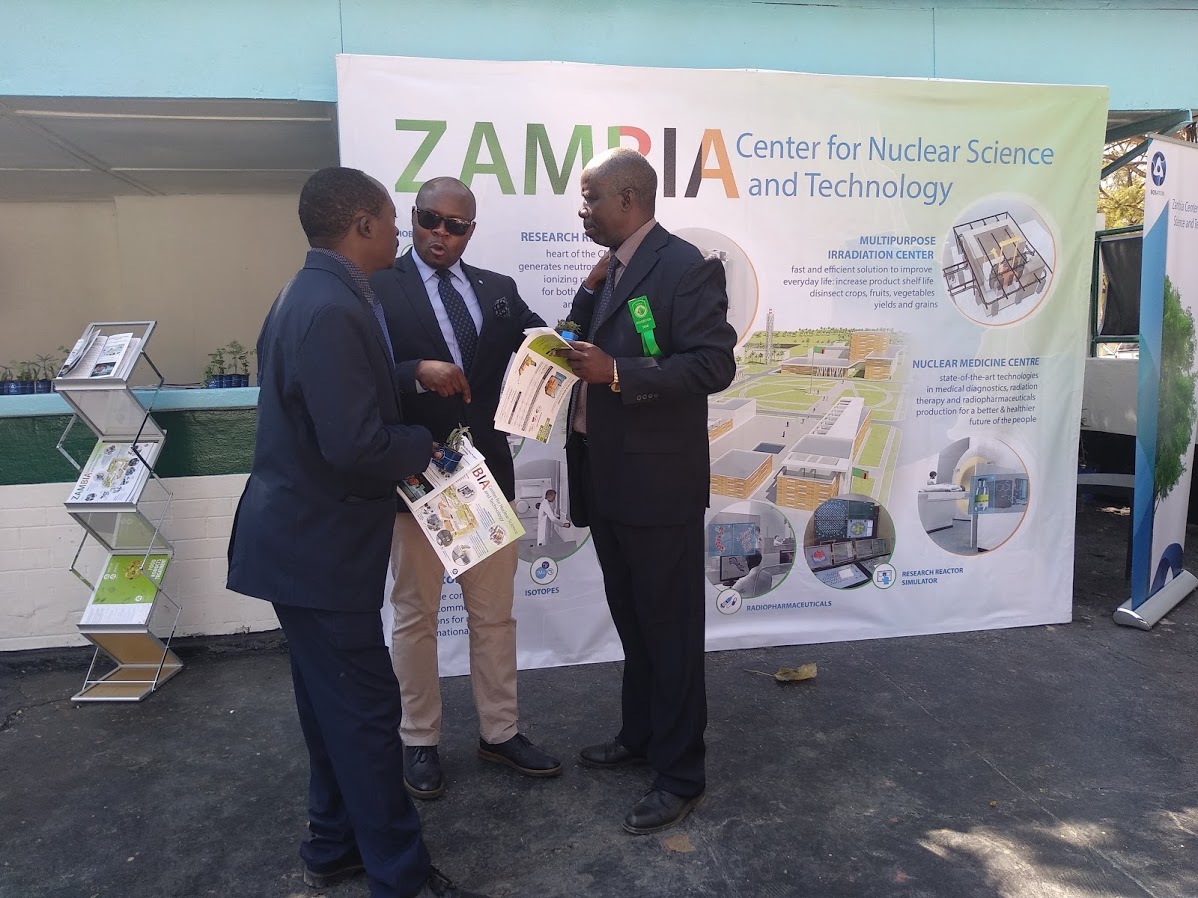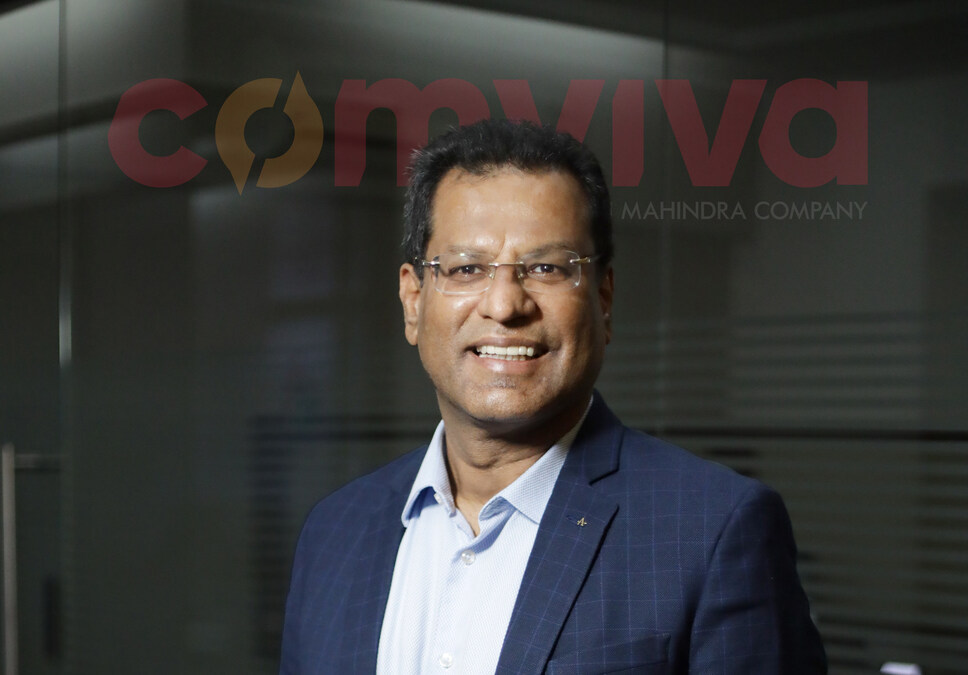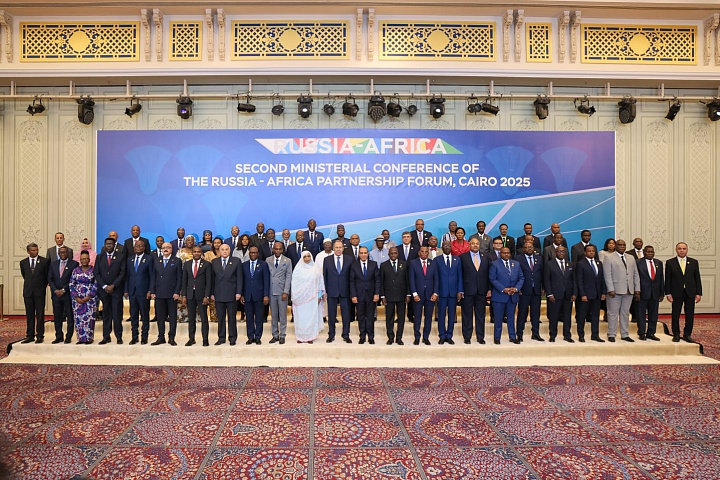World
Zambia Targets Economic Growth via Nuclear Technology

By Kester Kenn Klomegah
On August 6, 2018, the 92nd annual Agricultural and Commercial Show wrapped up after six entertaining and educational days in Lusaka, Zambia.
Thousands of visitors received information materials about the role of nuclear in Zambia’s sustainable economic growth during the 92nd annual Agricultural and Commercial Show.
The show was officially opened by President Edgar Lungu, who highlighted the importance of the show’s theme, which was ‘sustainable economic empowerment’.
He noted that the theme was directly in line with government’s aspirations espoused in the Second National Agricultural Policy (SNAP) to have an efficient, competitive and sustainable agricultural sector which assures food and nutrition security, increased employment opportunities and incomes.
The Zambian Ministry of Higher Education in collaboration with Russian State Atomic Energy Corporation ROSATOM hosted a dedicated information stand on the future Zambia Center for Nuclear Science and Technology (CNST).
Representatives of ROSATOM and Zambia’s Interim Secretariat on Nuclear Science and Technology (ISNST), constituted by senior officers from various Government Ministries and Institutions, worked on the stand, explaining the specifics and benefits of the future nuclear facility to thousands of Zambian visitors.
The stand provided the public with information on the nuclear technology that is set to assist Zambia to grow and be economically empowered, such as: food irradiation technologies, nuclear medicine (which is already being implemented at the Cancer Diseases Hospital), material science, radioisotope production and mineral identification techniques.
The materials were prepared by ROSATOM, ISNST and International Atomic Energy Agency (IAEA).
Dmitri Shornikov, CEO of Rosatom Central and Southern Africa, explained the future benefits of the Center and expressed the importance of educating the public on these benefits: “It is very important for the Zambian citizens to understand that the future Center will empower agriculture, medicine and industry, thanks to wide application of radiation technologies.”
“The CNST will also promote the growth of national education and science through the training of highly qualified experts in various fields. It represents the new stepping stone for Zambian scientific, economic and technological growth. Similar facilities have been contributing to more than 50 countries’ around the world for more than 60 years. Currently, there are 245 working research reactors in the world with 58 units operated in Russia”.
Mr Reuben Katebe, National Coordinator of the ISNST noted that the Center was directly in line with the theme of the show as well as government’s policy and that it would help the agricultural sector to grow sustainably and ensure food security: “The use of radiation for food preservation will improve food safety and create conditions for the increase of Zambian agricultural exports. We hope that our information stand helped many farmers to understand all the benefits that the Center will bring to them.”
Apart from agriculture, healthcare will also benefit from the Center’s activities like single use medical product sterilization,” said Mr. Katebe: “The radioisotopes produced here will be used to diagnose and treat primarily cancer and cardiac diseases. This Center will increase availability of high-tech nuclear medicine for Zambia’s population.”
For reference
State Atomic Energy Corporation Rosatom and the Republic of Zambia signed a general contract for the construction of a Center for Nuclear Science and Technology (CNST). The signing took place during the 10th international Atomexpo-2018 forum in Sochi. Construction of the center is the first joint project of Russia and Zambia in the field of nuclear technologies.
The center will be located 10 kilometers away from the capital of Zambia, Lusaka. The CNST will include a nuclear research facility based on a multipurpose research water-cooled reactor of up to 10 MW, a state of the art laboratory complex, multipurpose irradiation center as well as a cyclotron-based nuclear medicine center.
The project will be implemented in several stages within 3-6 years from the work commencement date under the contract. Rosatom has built more than 120 research reactors in Russia and abroad.
Kester Kenn Klomegah writes frequently about Russia, Africa and BRICS.
World
Comviva Wins at IBSi Global FinTech Innovation Award

By Modupe Gbadeyanka
For transforming cross-border payments through its deployment with Global Money Exchange, Comviva has been named Best In-Class Cross Border Payments.
The global leader in digital transformation solutions clinched this latest accolade at the IBS Intelligence Global FinTech Innovation Award 2025.
The recognition highlights how Comviva’s mobiquity Pay is helping shape a modern cross-border payment ecosystem that stretches far beyond conventional remittance services.
Deployed as a white label Wallet Platform and launched as Global Pay Oman App, it fulfils GMEC’s dual vision—positioning itself as an innovative payment service provider while digitally extending its core money transfer business.
The solution allows GMEC to offer international money transfers alongside seamless forex ordering and other services. These capabilities sit alongside a broad suite of everyday financial services, including bill and utility payments, merchant transactions, education-related payments, and other digital conveniences — all delivered through one unified experience.
“This award is a testament to Oman’s accelerating digital transformation and our commitment to reshaping how cross-border payments serve people and businesses across the Sultanate.
“By partnering with Comviva and bringing the Global Pay Oman Super App, we have moved beyond traditional remittance services to create a truly inclusive and future-ready financial ecosystem.
“This innovation is not only enhancing convenience and transparency for our customers but is also supporting Oman’s broader vision of building a digitally empowered economy,” the Managing Director at Global Money Exchange, Subromoniyan K.S, said.
Also commenting, the chief executive of Comviva, Mr Rajesh Chandiramani, said, “Cross-border payments are becoming a daily necessity, not a niche service, particularly for migrant and trade-linked economies.
“This recognition from IBS Intelligence validates our focus on building payment platforms that combine global reach with local relevance, operational resilience and a strong user experience. The deployment with Global Money Exchange Co. demonstrates how mobiquity® Pay enables financial institutions to move beyond remittances and deliver integrated digital services at scale.”
“The deployment of mobiquity Pay for GMEC showcases how scalable, API-driven digital wallet platforms can transform cross-border payments into seamless, value-rich experiences.
“By integrating remittances, bill payments, forex services, and AI-powered engagement into a unified Super App, Comviva has reimagined customer journeys and operational agility.
“This Best-in-Class Cross-border Payments award win stands as a testament to Comviva’s excellence in enabling financial institutions to compete and grow in a digitally convergent world,” the Director for Research and Digital Properties at IBS Intelligence, Nikhil Gokhale, said.
World
Russia Renews Africa’s Strategic Action Plan

By Kestér Kenn Klomegâh
At the end of an extensive consultation with African foreign ministers, Russian Foreign Minister, Sergey Lavrov, has emphasized that Moscow would advance its economic engagement across Africa, admittedly outlining obstacles delaying the prompt implementation of several initiatives set forth in Strategic Action Plan (2023-2026) approved in St. Petersburg during the Russia-Africa Summit.
The second Ministerial Conference, by the Russian Foreign Ministry with support from Roscongress Foundation and the Arab Republic of Egypt, marked an important milestone towards raising bilateral investment and economic cooperation.
In Cairo, the capital city of the Arab Republic of Egypt, Lavrov read out the final resolution script, in a full-packed conference hall, and voiced strong confidence that Moscow would achieve its strategic economic goals with Africa, with support from the African Union (AU) and other Regional Economic blocs in the subsequent years. Despite the complexities posed by the Russia-Ukraine crisis, combined with geopolitical conditions inside the African continent, Moscow however reiterated its position to take serious steps in finding pragmatic prospects for mutual cooperation and improve multifaceted relations with Africa, distinctively in the different sectors: in trade, economic and investment spheres, education and culture, humanitarian and other promising areas.
The main event was the plenary session co-chaired by Russian Foreign Minister Sergey Lavrov and Egyptian Minister of Foreign Affairs, Emigration, and Egyptians Abroad Bashar Abdelathi. Welcome messages from Russian President Vladimir Putin and Egyptian President Abdelhak Sisi were read.
And broadly, the meeting participants compared notes on the most pressing issues on the international and Russian-African agendas, with a focus on the full implementation of the Russia-Africa Partnership Forum Action Plan for 2023-2026, approved at the second Russia-Africa Summit in St. Petersburg in 2023.
In addition, on the sidelines of the conference, Lavrov held talks with his African counterparts, and a number of bilateral documents were signed. A thematic event was held with the participation of Russian and African relevant agencies and organizations, aimed at unlocking the potential of trilateral Russia-Egypt-Africa cooperation in trade, economic, and educational spheres.
With changing times, Africa is rapidly becoming one of the key centers of a multipolar world order. It is experiencing a second awakening. Following their long-ago political independence, African countries are increasingly insisting on respect for their sovereignty and their right to independently manage their resources and destiny. Based on these conditions, it was concluded that Moscow begins an effective and comprehensive work on preparing a new three-year Cooperation and Joint Action Plan between Russia and Africa.
Moreover, these important areas of joint practical work are already detailed in the Joint Statement, which was unanimously approved and will serve as an important guideline for future work. According to reports, the Joint Statement reflects the progress of discussions on international and regional issues, as well as matters of global significance.
Following the conference, the Joint Statement adopted reflects shared approaches to addressing challenges and a mutual commitment to strengthening multifaceted cooperation with a view to ensuring high-quality preparation for the third Russia-Africa Summit in 2026.
On December 19-20, the Second Ministerial Conference of the Russia-Africa Partnership Forum was held in Cairo, Egypt. It was held for the first time on the African continent, attended by heads and representatives of the foreign policy ministries of 52 African states and the executive bodies of eight regional integration associations.
World
TikTok Signs Deal to Avoid US Ban

By Adedapo Adesanya
Social media platform, TikTok’s Chinese owner ByteDance has signed binding agreements with United States and global investors to operate its business in America.
Half of the joint venture will be owned by a group of investors, including Oracle, Silver Lake and the Emirati investment firm MGX, according to a memo sent by chief executive, Mr Shou Zi Chew.
The deal, which is set to close on January 22, 2026 would end years of efforts by the US government to force ByteDance to sell its US operations over national security concerns.
It is in line with a deal unveiled in September, when US President Donald Trump delayed the enforcement of a law that would ban the app unless it was sold.
In the memo, TikTok said the deal will enable “over 170 million Americans to continue discovering a world of endless possibilities as part of a vital global community”.
Under the agreement, ByteDance will retain 19.9 per cent of the business, while Oracle, Silver Lake and Abu Dhabi-based MGX will hold 15 per cent each.
Another 30.1 per cent will be held by affiliates of existing ByteDance investors, according to the memo.
The White House previously said that Oracle, which was co-founded by President Trump’s supporter Larry Ellison, will license TikTok’s recommendation algorithm as part of the deal.
The deal comes after a series of delays.
Business Post reported in April 2024 that the administration of President Joe Biden passed a law to ban the app over national security concerns, unless it was sold.
The law was set to go into effect on January 20, 2025 but was pushed back multiple times by President Trump, while his administration worked out a deal to transfer ownership.
President Trump said in September that he had spoken on the phone to China’s President Xi Jinping, who he said had given the deal the go ahead.
The platform’s future remained unclear after the leaders met face to face in October.
The app’s fate was clouded by ongoing tensions between the two nations on trade and other matters.
-

 Feature/OPED6 years ago
Feature/OPED6 years agoDavos was Different this year
-
Travel/Tourism9 years ago
Lagos Seals Western Lodge Hotel In Ikorodu
-

 Showbiz3 years ago
Showbiz3 years agoEstranged Lover Releases Videos of Empress Njamah Bathing
-

 Banking8 years ago
Banking8 years agoSort Codes of GTBank Branches in Nigeria
-

 Economy3 years ago
Economy3 years agoSubsidy Removal: CNG at N130 Per Litre Cheaper Than Petrol—IPMAN
-

 Banking3 years ago
Banking3 years agoFirst Bank Announces Planned Downtime
-

 Banking3 years ago
Banking3 years agoSort Codes of UBA Branches in Nigeria
-

 Sports3 years ago
Sports3 years agoHighest Paid Nigerian Footballer – How Much Do Nigerian Footballers Earn













